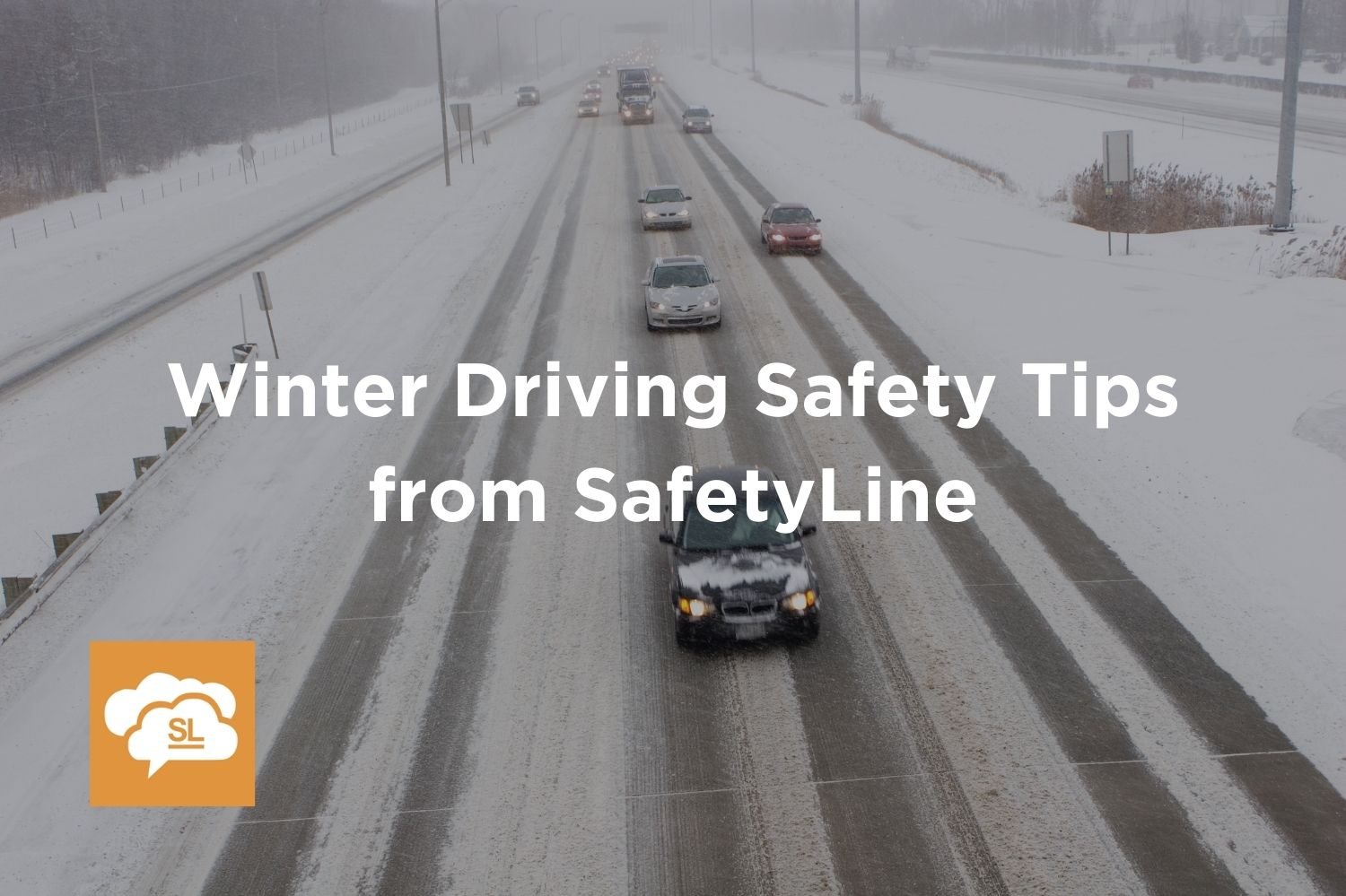Winter Driving Safety Tips from SafetyLine
Table of Contents
Winter Driving Safety Tips from SafetyLine
How to prepare for winter driving
Create an emergency preparedness kit
Get a tune-up
Proper tires
Dress warm and properly
Plan your route
Charge your phones
Don’t use cruise control
Driving in the snow and on ice: be defensive
Let’s all practice safe winter driving
Most places in North America are starting to experience the impact of winter, with cold temperatures, snow, and icy roads. Whether you’re driving with your family or for work, safe winter driving is a concern and a priority when the roads start to get slick and slippery. And whether you’re for personal reasons or your job, certain safety steps can be taken to protect winter drivers in both scenarios, regardless of where you’re going. As you read further, you will learn about accessible and proactive winter driving safety tips that will protect those riding along behind the wheel.
How to prepare for winter driving
Depending on where you live, winter driving hazards can range from pouring, visibility-limiting rain to dangerous, slippery ice to full-on, traffic-stopping snow. But because we know what to expect, drivers can do things now so they don’t experience serious trouble down the road.
Create an emergency preparedness kit
You’ve probably been told to have one, are we correct? With all the natural disasters and threats worldwide, emergency preparedness kits are usually what people have on hand to prepare them for the worst. Winter driving is similar. In an emergency, it is wise to have specific items in your emergency preparedness kit, which you store in your vehicle somewhere. The essentials of a winter driving emergency preparedness kit include:
Extra warm clothing, including winter hats, gloves, and snow pants
Flashlight (preferably a hand-charging one)
Warm blankets
Long-lasting food items like energy bars
Bottled water (for longer routes – will freeze if stored in the vehicle)
Snowbrush and scraper
Small shovel (in case you need to dig the vehicle out)
Jumper cables
Seatbelt cutter
Sand or kitty litter (for traction on ice/snow if stuck)
First aid kit
Candles with lighters and/or matches
Spare cell phone charger
Extra windshield wiper fluid for sub-freezing temperatures
Get a tune-up
Sometime in the fall, or even if you’re planning a long winter drive, take your vehicle to your mechanic or dealership to make sure everything looks safe and secure. These sorts of checks will look at everything, including tire pressure and condition, fluid levels, and other essential vehicular components and functions.
Proper tires
While getting a tune-up, ensure you have the proper tires for the conditions you will be driving in. It is mandatory to drive highways in the winter with snow tires in some areas. Particularly in very icy conditions (black ice), snowy road conditions, snow, or winter tires can be essential to get you to your destination safely on your winter road trip.
Dress warm and properly
Yes, this is obvious, but you would be surprised how, in the craziness of packing, many people forget to pack or wear proper, warm, and waterproof clothing before a winter trip. When deciding what to wear, consider circumstances in which you might have to be outside in an emergency or if you get stuck.
Plan your route
Thanks to advances in web mapping, planning a route or trip is as easy as ever, and the days of those flapping paper maps are long gone. But no matter if it’s on Google Maps or from directions a family member gave you, make sure that you plan your route ahead of time so that you can stay on track and anticipate any potential issues.
Charge your phones
Emergencies on the road usually are sudden and unexpected so therefore, when driving in the winter, try to make sure that your cell phones are being charged in case you need them to request help or relay your location. It’s not like most people let their phones die anyway, but it is especially pertinent when driving on a snow-drifted highway.
Don’t use cruise control
When driving on long stretches of highway, please do not use your cruise control as it cannot adjust to winter elements on the road (i.e. navigating or slowing down when there’s ice) or unexpected movements from other drivers. Also, with longer nights, wildlife and other obstructions could be much less visible.
Driving in the snow and on ice: be defensive
Last but not least (it’s the most crucial point), when you’re driving in the winter, do so with a defensive rather than an offensive attitude. What we mean is that you protect yourself and your passengers from not only other vehicles, but you are constantly thinking ahead, trying to anticipate any possible dangers. This also means not rushing while on the road, so again, plan your route and take your time – we make more mistakes when rushed.
Let’s all practice safe winter driving
When we all practice safe winter driving, the roads are safer for all of us. Because of the dangers, driving in the winter can be a stressful experience. However, having that peace of mind from being prepared and ready can make it a great experience.
Winter driving poses significant risks, especially for lone workers. Ensure safety with our Lone Worker Safety Solution App, and explore our pricing options. For additional information, visit our FAQ page and learn about the benefits of our solutions.

